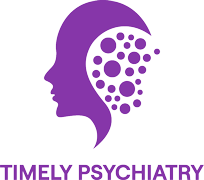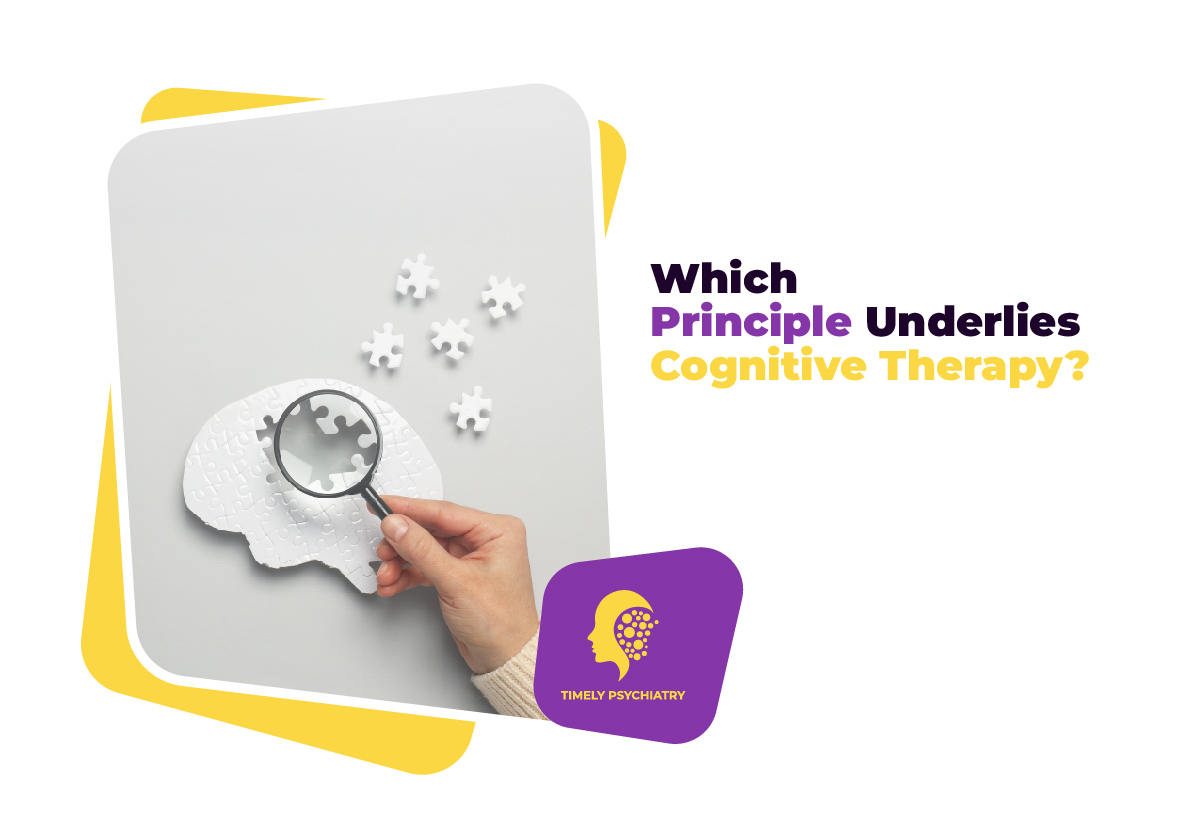The foremost theory behind CBT is that your thoughts, feelings, and behavior all influence each other.
Which principle underlies cognitive therapy? It is all about the thoughts and behaviors that are linked with each other. This means people can alter their behaviors by changing their thoughts and thinking.
Employing specific cognitive behavioral therapy (CBT) techniques, you can swap complicated thought patterns with more positive or helpful ones. This therapy can help you reframe your perspective and view life’s challenges differently.
Many therapists use CBT principles to aid clients in developing coping skills and better managing worrying situations.
To get a happy and healthier life ahead, you may visit TIMELY PSYCHIATRY.
What is CBT?
CBT can help individuals identify and deconstruct challenging or harmful assumed patterns.
This can lead to positive outcomes for their feelings and behavior. CBT is a goal-oriented, time-based, structured treatment.
This psychological treatment can help with various mental health issues, including:
- Anxious emotions
- Depression
- Anxiety disorders
- Substance abuse
- Eating disorders
Contact us for more details and further support.
Three Levels of Cognitive Behavioral Therapy
-
Core Beliefs
The central beliefs of CBT are knowledge from our childhood experiences. They are highly rooted in how we view ourselves, our environment, the future, and our beliefs about these issues.
-
Dysfunctional Assumptions
Humans tend to hold onto the negative more quickly than the positive. However, these cognitive distortions are irrational thought patterns that distort our perceptions of reality.
-
Automatic Negative Thoughts
Automatic negative thoughts are instinctive negative perceptions of certainty that occur out of habit. They can be trying to recognize since they are brief and cause negative feelings.
Which Principle Underlies Cognitive Therapy – Learn 7 Basic Principles
Seven basic principles that underlie cognitive behavior therapy include:
-
CBT Is Based on An Ever-Evolving Formulation of Patients’ Problems
This principle confirms that CBT patients’ challenges are different and continuously varying.
The early sessions will briefly evaluate the patient’s current thinking patterns, including their crucial beliefs, cognitive distortions, and lines of hostile intelligence.
-
CBT Requires a Sound Therapeutic Alliance
CBT needs a sound therapeutic alliance. It is vital to have a solid, believing relationship between the therapist and the patient.
The therapist should be able to provide care, warmth, empathy, and capability.
-
CBT Emphasizes Collaboration and Active Participation
CBT therapists emphasize what is happening in the person’s present life rather than what has led to their worries.
A certain amount of evidence about one’s history is required, but the focus is primarily on moving forward to develop more actual ways of managing life.
-
CBT Is Goal-Oriented and Problem-Focused
The patient should establish goals in the first sessions.
One must have objectives to assess and react to thoughts conflicting with those goals. This allows the patient to recognize and stop those thoughts more easily.
CBT is problem-focused and goal-oriented.
To ensure everyone knows what they are working toward, ask your patient to outline their concerns and establish clear goals during their first session.
-
CBT Initially Emphasizes the Present
CBT prioritizes the current at first.
Cognitive behavioral therapy focuses on specific present situations or ongoing thoughts that cause distress and finds ways to rally a person’s state of mind.
-
CBT Aims to Be Time-Limited
Simple anxiety and despair can be treated within 6 to 14 sessions.
However, circumstances with more severe mental illnesses and strong beliefs can be treated in a time frame reaching from a few months to several years if necessary.
-
CBT Sessions Are Structured
Structured treatments help to decrease efficiency and success.
The process includes doing a mood check, collaboratively setting the agenda for the session, and having a short-term review of the week.
This is followed by:
- Reviewing taskwork
- Setting new taskwork
- Discussing difficulties
What Are the Main Techniques of Cognitive Therapy?
-
Cognitive Restructuring
It is the procedure of leading a patient towards more positive rational patterns instead of their current shapes of negative thinking.
As with all talk therapy, the patient’s active contribution is essential.
-
Behavioral Experiments
These are a mutual part of CBT treatment.
This is where the therapist asks the patient to do something to test the correctness of their dysfunctional thinking.
A therapist creates behavioral experiments to aid the patient in quickly recognizing evidence that their negative belief system is inaccurate.
-
Journaling
It is highly encouraged in cognitive therapy because it becomes easier for thoughts to take shape when written down.
CBT needs the therapist to be aware of your ever-evolving formulation of thought patterns, and journaling helps them to gain this awareness.
-
Activity Scheduling
It can be a valuable exercise to help patients recover their mental health; older adults’ mental health is no exception.
There are four categories of actions regarding CBT-related activity scheduling: pleasure, command, self-care, and handling home.
To Sum Up
Which principle underlies cognitive therapy? The essential principle of CBT lies in the understanding that feelings, thoughts, and actions are all connected.
Changing your thoughts can make favorable, lasting variations in how you feel. Awareness of our thought patterns lets us identify dysfunctional thoughts and create new ones.
By learning how to manage how you think, you can change how you observe and behave.
Frequently Asked Questions
What principle underlies cognitive behavioral therapy?
Cognitive therapy is created on the principle that thoughts disturb behavior.
What is the principle of cognitive therapy?
The primary purpose of cognitive therapy is to aid patients in learning services that allow them to see the link between their opinions and emotions.
Which principal underlying is cognitive therapy?
CBT’s central tenet is that your thoughts, feelings, and actions are interconnected.
Using particular cognitive behavioral therapy (CBT) techniques, you can swap out negative thought patterns for constructive or beneficial ones.
What is the main idea that underlies cognitive therapy?
The idea behind cognitive therapy is that how you think regulates how you feel and act.
Cognitive therapists support their clients in changing dysfunctional views to relieve distress. They help clients see how they misinterpret a condition (cognitive distortion).

